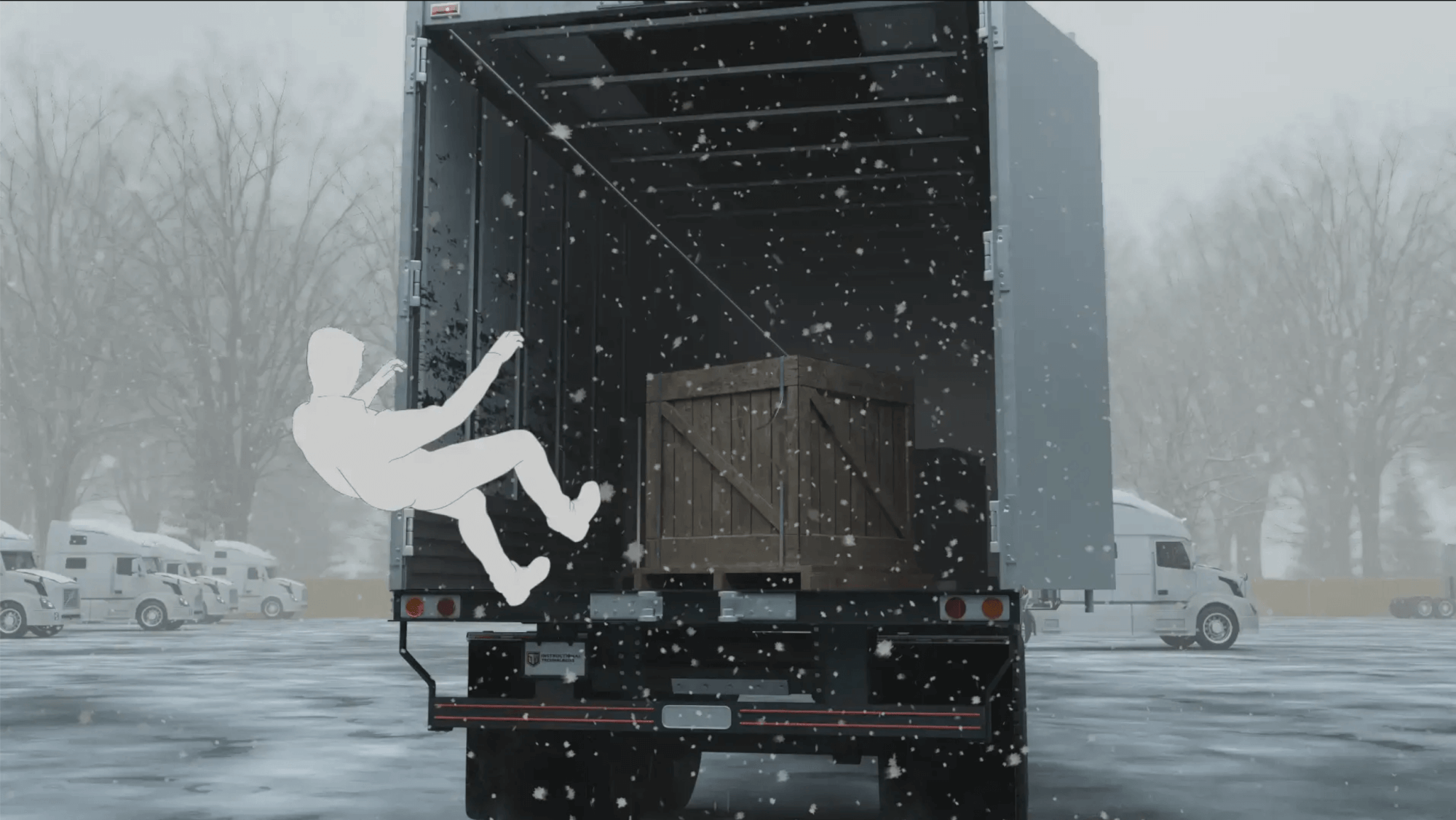
Ask anyone who works in trucking: the holiday season is not the most wonderful time of the year. Winter weather and frantic delivery schedules make drivers stressed, distracted and prone to injuries. To make matters worse, higher volumes and bigger packages mean drivers are likely to use their liftgates more often.
It’s risky to assume drivers know how to avoid common liftgate injuries (you know that old saying about what happens when you assume). Slip and fall injuries are expensive ($47,000 per incident on average), and they’re more likely to happen in slick winter weather. A small investment in liftgate safety training now can save you thousands in the months to come.
Download Our Free Winter Safety Resources Bundle for Fleets!
Just how expensive are liftgate incidents? Let us count the ways…
5 Major Expenses Caused By Liftgate Safety Fails
When most people think about the cost of liftgate incidents, they think of the obvious stuff: damaged cargo and injuries. Unfortunately, the costs don’t stop there. There are lots of non-obvious expenses.
- Damaged Cargo: The direct non-injury costs of a liftgate incident depend on the cargo. Dropping a rack of bread won’t cost much. Dropping a premium armoire or getting mud all over a custom sofa (not implausible this time of year) could cost thousands of dollars.
- Operational Costs: The direct costs of damaged cargo often pale in comparison to the indirect costs of a liftgate incident, which can exceed the direct costs by five-fold or more. Consider the financial and logistical costs of rerouting drivers, replacing damaged product, scheduling special deliveries, rush orders and overtime. Suddenly that expensive armoire seems like the least of your worries.
- Extra Fuel: No matter the size of your fleet, fuel is a major expense. And if a liftgate incident occurs while a driver is en route, you’ll burn through a lot of it. There’s the fuel the driver already used, fuel to send a maintenance or two truck, fuel to send out a new driver, fuel to make an extra delivery stop…it adds up quickly.
- Customer Accommodation: In addition to the cost of replacing damaged cargo, you’ve got an unhappy customer to deal with. Think of the time and money you’ll devote to phone calls, rescheduling concerns, replacements and refunds. Even if you bend over backwards to make things right, a liftgate incident can permanently damage a customer’s trust, as well as your fleet’s reputation.
- Severe Injuries: A single slip on an icy patch could put an employee out on workers’ comp for weeks or even months. When fingers get caught in a liftgate, the injury can be devastating and permanent; workers can easily lose their fingers or severely damage them. This type of injury can end a career and result in astronomical medical bills.
Top 4 Liftgate Safety Tips
Still think your fleet doesn’t need to worry about liftgate incidents? We sure hope not!
When it comes to reducing these incidents, communication is key. These four things can make a big difference, and they cost almost nothing.
- Use signage and visual cues. Help busy workers avoid injuries by adding visual safety cues to the liftgate itself. Put a strip of bright, slip-proof paint to the edge of the deck and all around the edge of the liftgate. Add hand-trauma decals and painted pinch points near moving parts and near the liftgate controls.
- Demonstrate safe operation. During driver meetings, demonstrate how to safely operate a liftgate and call out both year-round and winter weather hazards. Ask drivers to share problems they’ve run into, how they solved the issue and tips for liftgate operation. It’s also a good idea to evaluate liftgate operations during road tests and ride evaluations.
- Train drivers and helpers to give all-clear signals. Communication between a driver and helper will reduce injuries too. Drivers and helpers should give a verbal “all clear” to each other before operating the liftgate.
- Mandate proper footwear and maintenance: Liftgate decks get chipped and slick over time. Require your maintenance team to pay close attention to liftggate wear and tear and prioritize repairs. Encourage drivers to embrace rules around good footwear. Many fleets find the cost to provide two new pairs of boots per year more than offsets the cost of injuries.
This time of year, an ounce of prevention is worth several thousand pounds of damaged product, but who has time to develop a comprehensive winter safety training plan? You do! Use our free winter safety resources bundle to get a jumpstart on winter safety.
If you enjoyed this article, we recommend the following:
Video: Why Bottom-Line Leaders Invest in Winter Incident Prevention
Driver Fatigue: Stats Show Drowsy Driving Is as Dangerous as Drunk Driving




